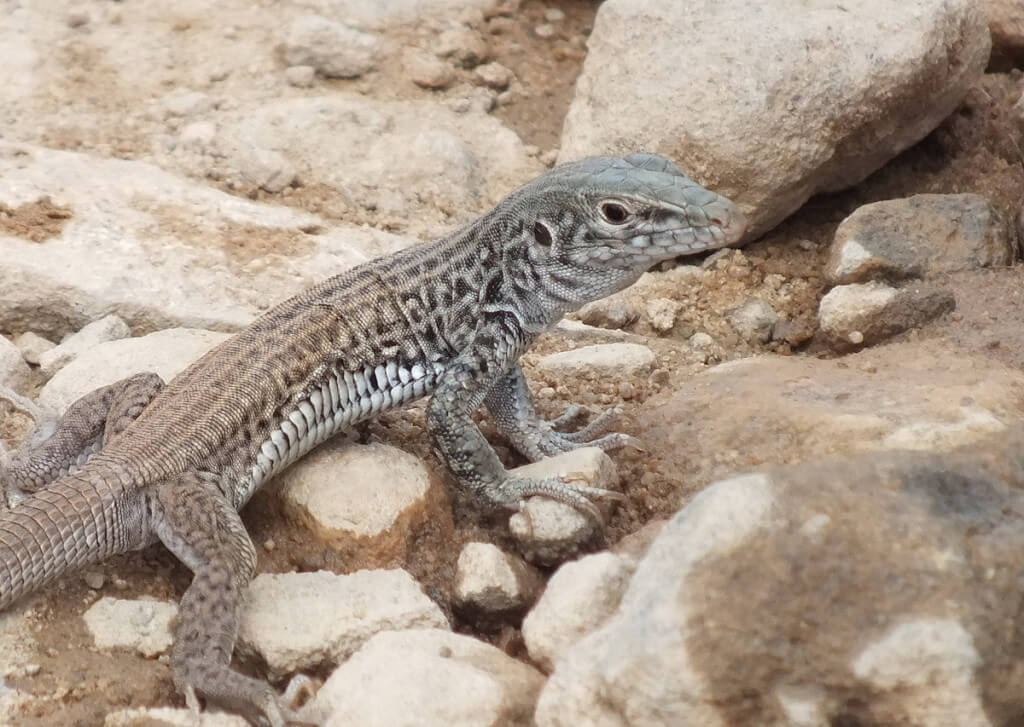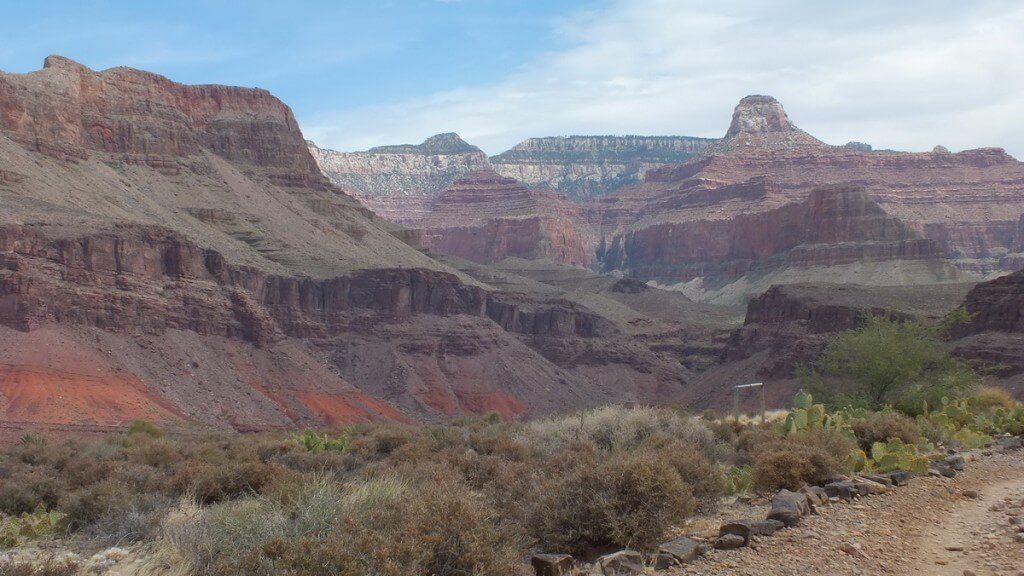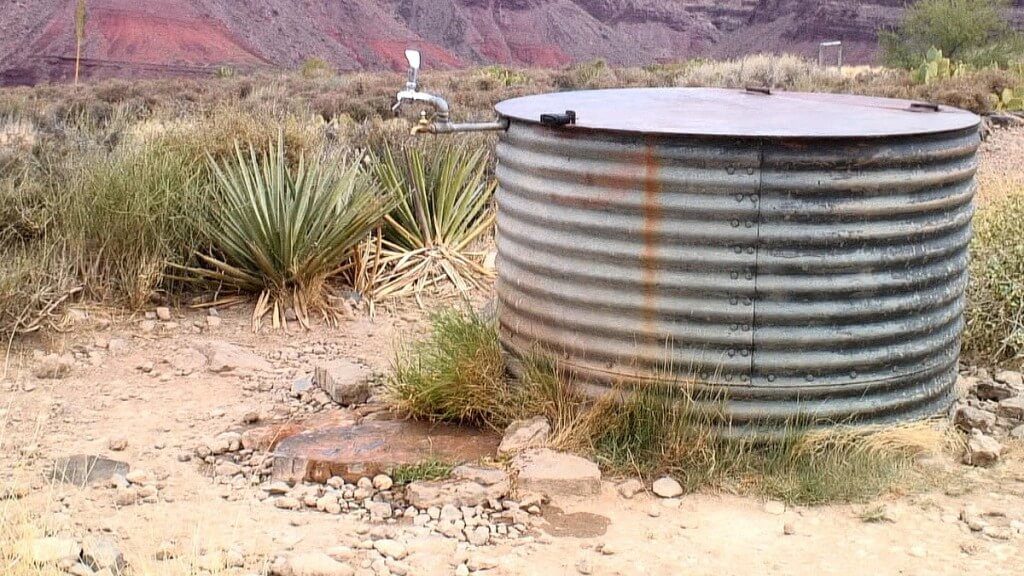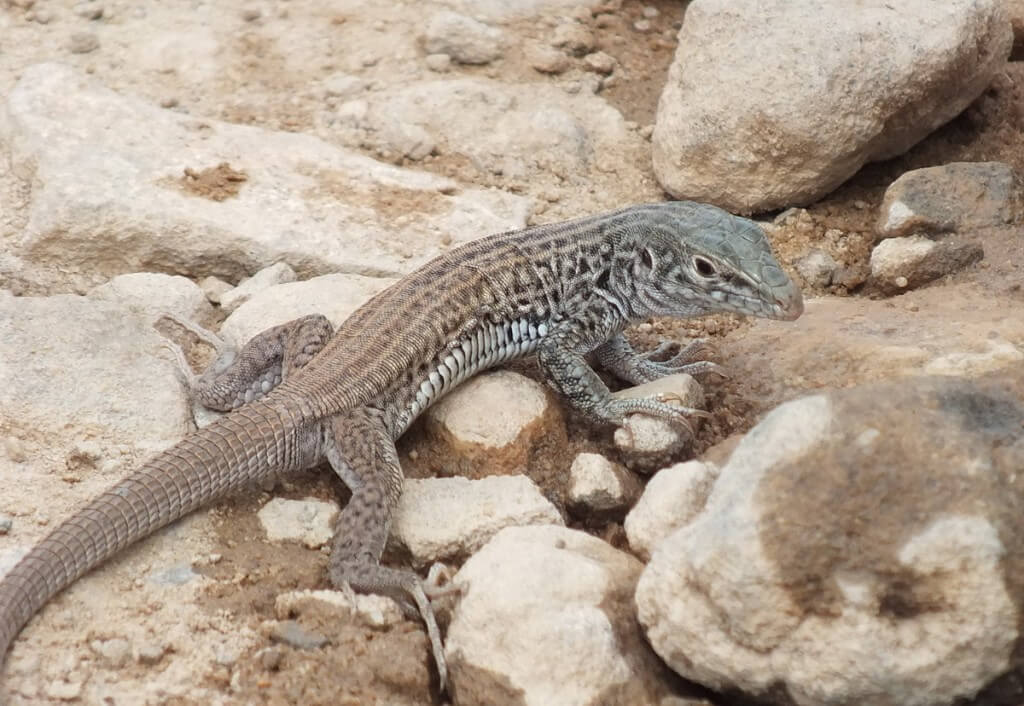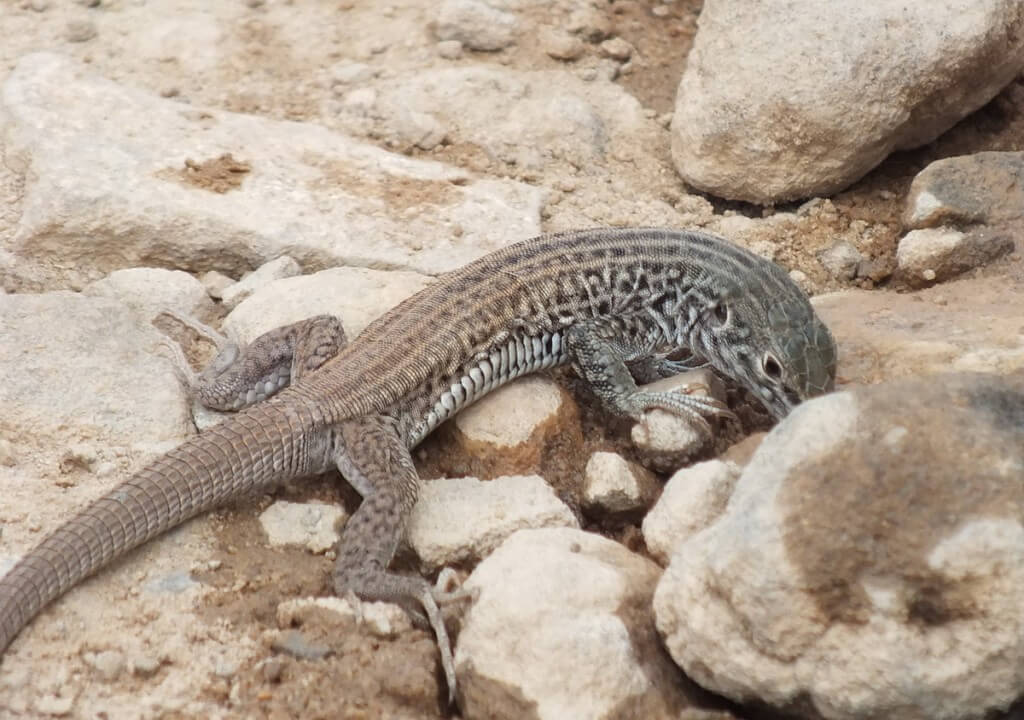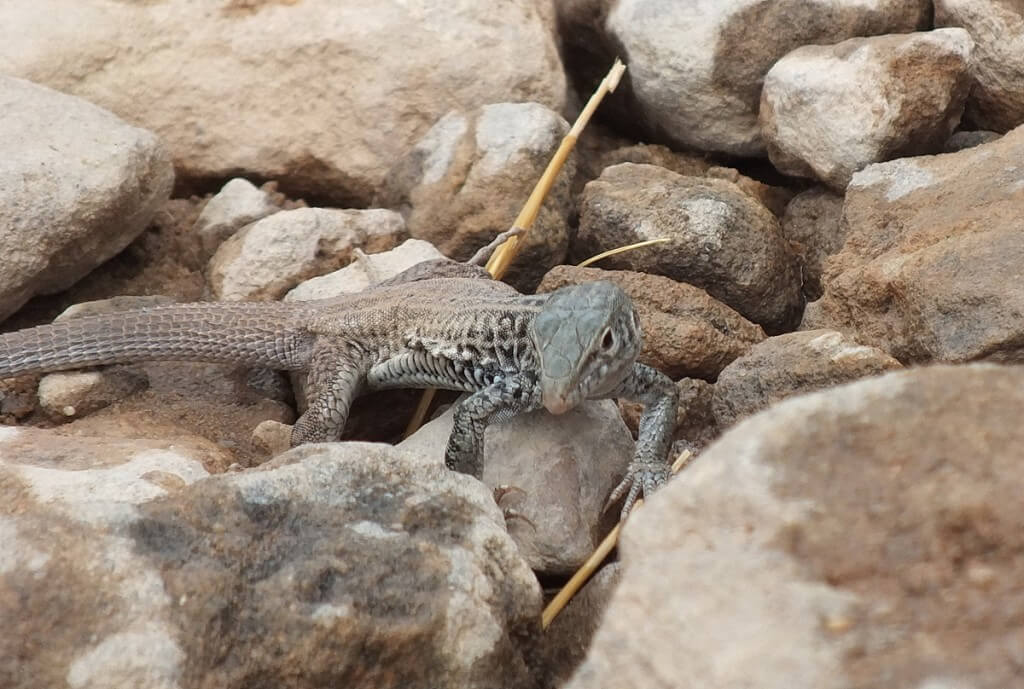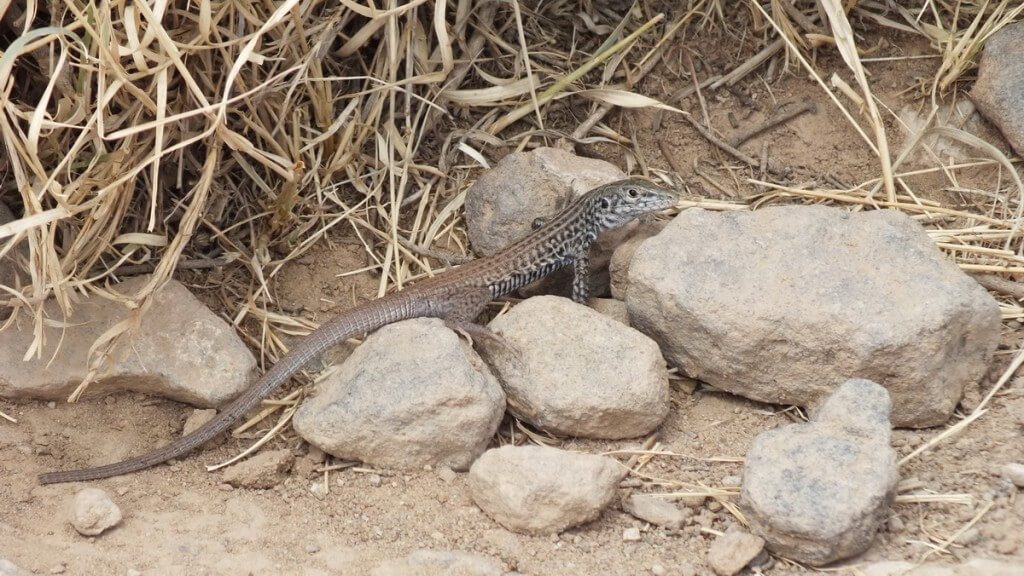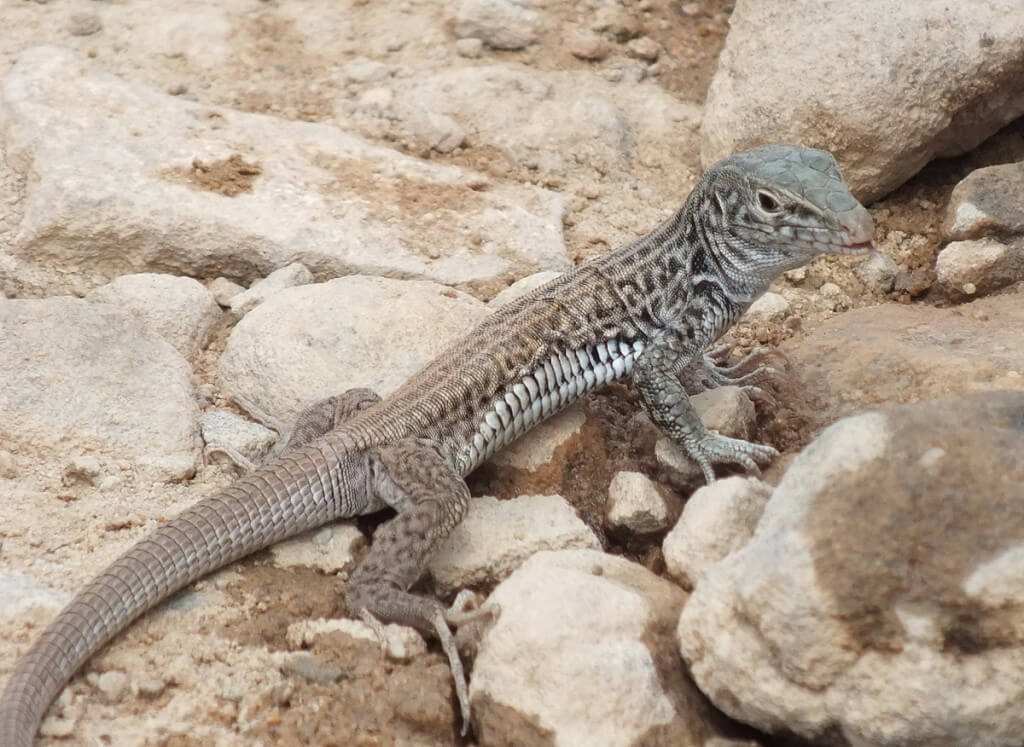Northern Whiptail Lizard At The Grand Canyon
After we left the oasis of Indian Garden, Bob and I wasted no time making headway towards Plateau Point at Grand Canyon National Park. The heat was building, the wind was constant, and the sun was torturous. Still, we forced ourselves to remain vigilant since other hikers had spotted rattlesnakes on the trail. It was when we drew near the water refilling station about 3/4 of the way between the two points that we saw a Northern Whiptail Lizard taking advantage of the puddles of spilled water in the shade of the water reservoir.
The habitat of the Tonto Platform is quite inhospitable so other than the odd ground squirrel seen darting amongst the scrub brush, our wildlife sightings were quite scarce.
Because of the proximity to the underground water supply at Indian Garden, it is possible for the park to maintain a supply of clean drinking water for hikers on that open stretch of the Tonto Desert. We, ourselves, were quick to re-soak our neckerchiefs and hats as I’m sure many before us had done as well. The spillage was a benefit to the little creatures that live nearby.
Blending in marvelously with the wet rocks and brown sand, this Northern Whiptail Lizard was nearly invisible. Only its quick movements drew our attention to its presence.
There are so many subspecies of these lizards that even experts find it difficult to distinguish between them. Some might refer to this lizard as an Arizona Desert Whiptail Lizard. 
The lizard seemed very skittish so I kept my distance when photographing its lithe body, but at least it didn’t venture far from the water.
I have learned that the behaviour of the different whiptail lizard species varies quite a bit with some being active through the day while others are nocturnal. Some lizards assume a sit-and-wait attitude when seeking prey, while others are active foragers.
Northern Whiptail Lizards are one of the latter, foraging intensely for prey at a frenetic pace.
The Northern Whiptail Lizard is an insectivore but also will eat terrestrial invertebrates as well as smaller lizards. They have a non-expandable jaw so to eat larger prey is pretty much impossible. It is also interesting to note that these lizards have eyelids and ears, with a complimentary acute sense of smell and sharp vision.
Many of the lizards have not been officially documented within its boundaries. Lizards are abundant there because their preferred habitat is rocky, semi-arid areas with sparse vegetation. What makes that type of environment suitable is the fact that lizards are cold-blooded animals that depend on the warmth of the atmosphere for activity. The lowest elevations of the Grand Canyon have hot and dry desert conditions.
Bob and I found the frenetic movements of the Northern Whiptail Lizard to be quite comedic by times. Perhaps that is why they have been nicknamed Racerunners. They certainly move more quickly than the eye can see.
Frame To Frame – Bob and Jean

